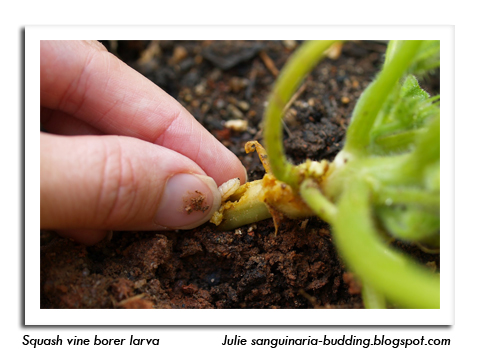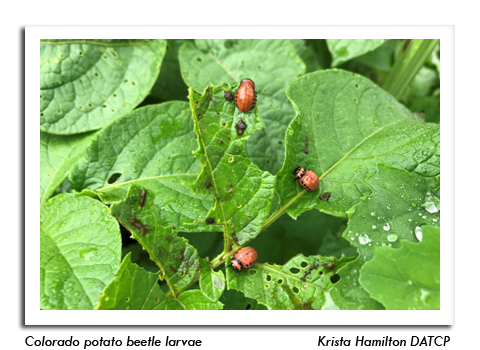
 |
|
|
Vegetables
Volume 64 Number 10 Date 07/04/2019 SQUASH BUG - Adults are appearing on cucurbits in home gardens, and populations generally increase sharply by mid-July with the addition of small nymphs. An average of one egg mass per plant when plants are flowering is recommended as the basis for initiating treatment. For gardens, hand picking and destroying the bugs and their eggs is most effective. Another option is to place cardboard or newspaper on the ground next to the plants. At night the squash bugs will aggregate beneath the cardboard and can be destroyed in the morning. Organic growers may use directed applications of pyrethrum (PyGanic) or the pre-mix with azadirachtin (Azera). Growers should be aware that the efficacy of most insecticide materials is reduced at temperatures above 80°F and the smaller nymphs are more easily killed than the adults. Refer to UWEX publication A3422 "Commercial Vegetable Production in Wisconsin" for a list of registered insecticides. SQUASH VINE BORER - Increased inspection of pumpkins, squash, gourds, and other vine crops is recommended during the next two weeks. Egg laying has started and small larvae will soon begin boring into squash stems and runner vines. Insecticides are only useful if applied before the larvae tunnel into vines, and a second application is usually necessary during the adult flight period. VARIEGATED CUTWORM - This sporadic pest was the cause of severe damage to seedling vegetables on a Milwaukee County CSA farm in June. Variegated cutworm (VCW) is a migratory insect that last appeared in record numbers in Wisconsin crops in 2012. Considered one of the most damaging cutworms on beans, potato and tomato, the larvae of this species climb plants at night to feed on foliage and fruits. The VCW caterpillar is differentiated from other cutworms by a single row of 4-5 yellow circular spots on the back. LATE BLIGHT - Disease severity values (DSV) for all potatoes near Grand Marsh and for early and mid-planted potatoes in the Hancock and Plover areas have exceeded the late blight risk threshold triggering preventative fungicide application. UW-Extension Vegetable Plant Pathologist Dr. Amanda Gevens recommends treatments to limit initial late blight infection begin at this time in these production areas. As of July 4, no late blight has been detected in the state. COLORADO POTATO BEETLE - All larval stages were observed in the past week on potatoes in several southern and western Wisconsin community gardens. The summer generation of beetles is expected to begin appearing in potatoes by mid-July. -- Krista Hamilton, DATCP Entomologist 




|
|
|